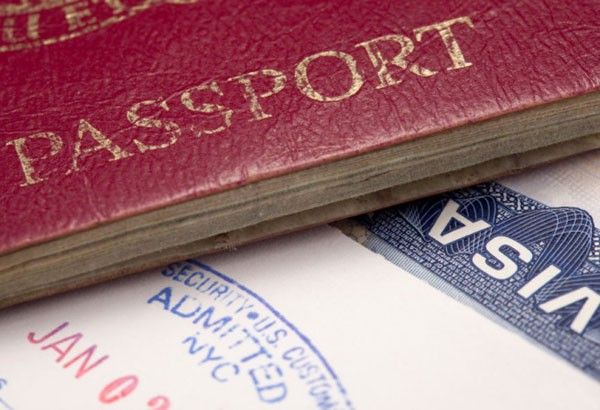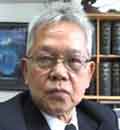Opinion-Columns | MIGRANT MATTERS- ABCs of US visas
Sixth of a series
“ELEMENTARY, my dear Watson,” the famous fictional Scotland Yard detective said. Sherlock Holmes was addressing his companion, Dr. John H. Watson, on how simple really it is to solve a crime.
So it is with US visas — especially the temporary alphabetized variety officially called the non-immigrant visas.
Which of these alphabetized visas offer the best chance of approval to enter and stay in the US?
The degree of difficulty mainly depends on 1) your meeting the eligibility requirements for the visa being applied for which in all instances; 2) your permanent financial, family and community ties in the Philippines.
Section 214(b) of the Immigration and Nationality Act (INA) capsulizes the presumption that all non-immigrants are intending immigrants unless proven otherwise.
Such a presumption gives full authority to the interviewing visa consul to issue or refuse the visa application. Such consular absolutism is, in turn, anchored on the dual intent doctrine under 214(b), the non-immigrant or immigrant intent.
When refused under this provision, the interviewing consul determines that the applicant
– Did not sufficiently demonstrate that s/he qualifies for the non-immigrant visa category applied for; and/or
– Did not overcome the presumption of immigrant intent, required by law, by sufficiently demonstrating evidence of strong ties to the home country that will compel the applicant to leave the United States at the end of the temporary stay.
In 2023, the Department of State reported 7,760,827 non-immigrants in the visitor visa varieties (B-1 temporary visitor for business; B-1 B-2 temporary visitor for business or pleasure). B-1, B2, BCC combination B-1/B-2 and border crossing card and B-2 temporary visitor for pleasure overcame that immigrant intent presumption.
The H-1B temporary work visa for specialty occupations and L visa (intracompany transferee) applicants, along with their spouse and any minor children, are exempted from this requirement.
The other temporary visas under “H” — the H-2A agricultural workers and H-2B non-agricultural workers — are not. The mitigating factors that help overcome the presumption are the fact that work visas require a qualified, eligible employer vetted by both the US Department of Labor and the US Citizenship and Immigration Services.
Job-, occupation-related visas less scrutinized
– “A” visa holders foreign government officials (108,678 admitted)
– “C” aliens in transit and “C-1/D” combination transit crew members: 382,905 were allowed in. It is safe to assume that there would be few, if ever, “ship or plane jumpers” crewmen or flight attendants not leaving with the departing ship or plane.
– “G” representative staff of international organizations (47,976)
– “I” representative of foreign information media (10,986) accredited and authorized media personnel, e.g., from newspapers, TV, radio and magazines, excluding personal podcasters
– “L-1” intracompany transferee, e.g., executive or manager of a Philippine-based firm assigned to start a subsidiary or affiliate of the parent company in the country or to manage the operations of a joint venture between the Philippine and US firms (159,948)
– “N” certain relatives of SK special immigrants (8) and NATO officials (8,207)
– “O” person with extraordinary ability in the sciences, arts, education, business or athletics (38,782)
– “P” athlete, artist or entertainer (35,030)
– “Q” international cultural exchange program participant (1,667)
– “R” person in religious occupation (8,009)
– “S” informant possessing information on the criminal activity of terrorism (0)
– “T” victim of a severe form of trafficking in persons (554)
– “U” victim of criminal activity (1,789)
Education-related
– “F” In 2023, the DHS Yearbook of Statistics shows 472,262 academic students were allowed entry, 6,247 as “M” vocational student visa holders
– “J” In the same year, 348,721 exchange visitors were issued visas and admitted into the US
Trade and investment facilitators
– “E” treaty trader or investor. For the same 2023 fiscal year (Oct. 1, 2022 to Sept. 30, 2023), consular posts worldwide issued 71,263 visas. An “E1” applicant “must be coming to the United States solely to engage in substantial trade, including trade in services or technology, in qualifying activities, principally between the United States and the treaty country (E-1), or to develop and direct the operations of an enterprise in which the applicant has invested a substantial amount of capital (E-2), or to work in the enterprise as an executive, supervisor, or essentially skilled employee.”
The intending “E” visa applicant may also first apply for the B-1/B2 visa (business or pleasure) to literally and physically check out the city, county and state where s/he intends to establish a viable commercial “enterprise, have initial discussions with potential partners, investors before progressing to the “E” visa class.
Priority non-immigrants
The Department of State is currently encouraging foreign businesses to expand their financial commitment and facilitate trade and commerce between the two countries through the Priority Interview Program (PIP), “designed to promote and facilitate legitimate business travel between the United States and the Philippines.”
Applicants from qualifying businesses are most likely to be under the E and L categories (not another or separate, special non-immigrant class but would have “access to expedited visa appointment and priority processing of visas and deliveries.”
Solving the riddle of which visa an applicant has the best chance of overcoming the immigrant intent really depends on how well you know the alphabet of US visas and, therefore, apply for one where you have the best chance of being allowed entry to the US.
A member of the press — legitimate Philippine-based media — may choose to apply for an F-1 academic student visa to further his/her career.
A recent graduate of the K-12 program may initially apply for a B-1/B-2 visa to check out the physical layout, amenities, and cultural environment of the intended college/campus of intended enrolment or go directly for the F-1 academic visa.
Whichever visa is selected and how much voluminous paper evidence one has during the visa appointment, consuls emphasize that they interview the applicants, not documents.
While your documents may speak volumes, the consul evaluates how you answer the questions by reading your body language.



 Memento Maxima Digital Marketing
Memento Maxima Digital Marketing







